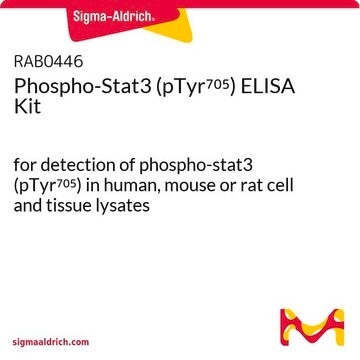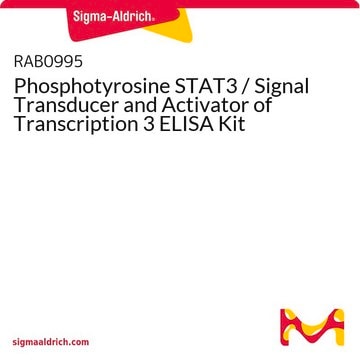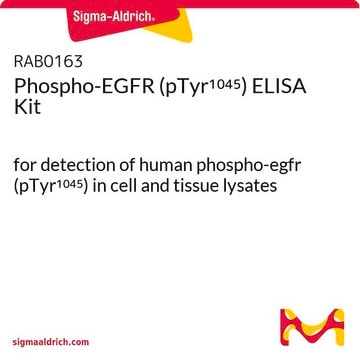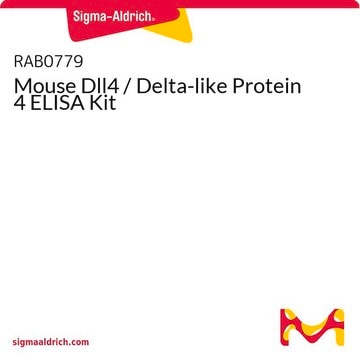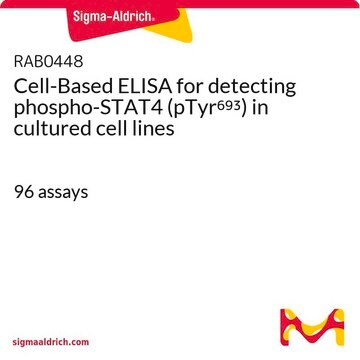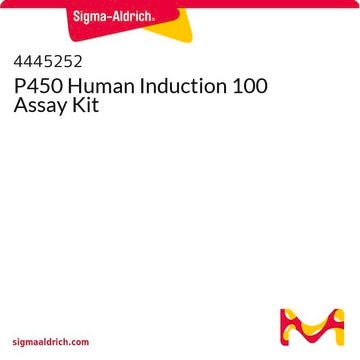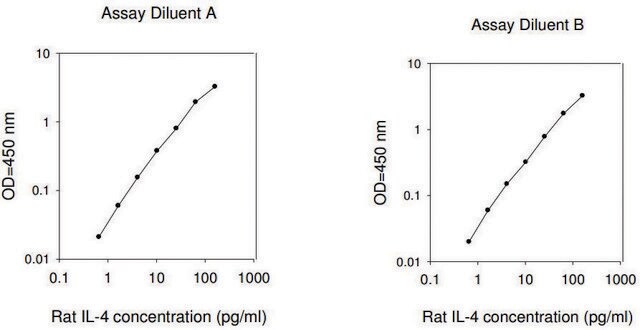RAB0447
Phospho-Stat3 (pTyr705) and pan-Stat3 ELISA Kit
for detection of phospho-stat3 (pTyr705) and pan-stat3 in human, mouse or rat cell and tissue lysates
Sign Into View Organizational & Contract Pricing
All Photos(1)
About This Item
UNSPSC Code:
41116158
NACRES:
NA.32
Recommended Products
species reactivity
human, mouse, rat
technique(s)
ELISA: suitable
capture ELISA: suitable
shipped in
wet ice
storage temp.
−20°C
Gene Information
human ... STAT3(6774)
mouse ... STAT3(20848)
rat ... STAT3(25125)
General description
Signal transducers and activators of transcription 3 (STAT3) is a transcription factor that belongs to the family of STAT proteins. The protein contains an Src homology 2 (SH2) domain for protein-protein interactions. STAT3 is activated by phosphorylation on tyrosine 705 by c-Jun N-terminal kinases (JNKs), cytokine receptor-associated kinases, nonreceptor tyrosine kinases, and growth factor receptor tyrosine kinases, in response to growth factors and cytokines. Phosphorylation of STAT3 is important for dimer formation and gene expression. STAT3 mediates the expression of a variety of genes that are involved in cell proliferation and differentiation. It also aids in pro-cancer immunity. The Phospho-Stat3 (pTyr705) and pan-Stat3 ELISA (enzyme-linked immunosorbent assay) is a very rapid, convenient, and sensitive assay kit that can monitor the activation or function of important biological pathways in cell lysates.
The Phospho-Stat3 (pTyr705) ELISA (Enzyme-Linked Immunosorbent Assay) kit is a very rapid, convenient and sensitive assay kit that can monitor the activation or function of important biological pathways in cell lysates.
Immunogen
Stat3 (pTyr705) synthetic phosphopeptide, Recombinant Human Stat3
Application
Phospho-Stat3 (pTyr705) and pan-Stat3 ELISA Kit has been used in enzyme-linked immunosorbent assay (ELISA) for quantitative measurement of phosphorylated signal transducer and activator of transcription3 (p-STAT3) in liver tissues.
Signal Word
Warning
Hazard Statements
Precautionary Statements
Hazard Classifications
Met. Corr. 1
Storage Class Code
8B - Non-combustible corrosive hazardous materials
WGK
WGK 3
Flash Point(F)
Not applicable
Flash Point(C)
Not applicable
Certificates of Analysis (COA)
Search for Certificates of Analysis (COA) by entering the products Lot/Batch Number. Lot and Batch Numbers can be found on a product’s label following the words ‘Lot’ or ‘Batch’.
Already Own This Product?
Find documentation for the products that you have recently purchased in the Document Library.
Targeting the Hepatocyte Growth Factor Receptor to Overcome Resistance to Targeted Therapies
Embryonic Stem Cell Protocols, 25-60 (2019)
Jinbo Yang et al.
Cancer research, 65(3), 939-947 (2005-02-12)
Signal transducer and activator of transcription 3 (STAT3) is phosphorylated on tyrosine residue 705 in response to growth factors or cytokines to form activated homodimers that drive gene expression. Because the stat3 promoter has a binding site for STAT3 dimers
Manar M Esmail et al.
Toxicology letters, 347, 23-35 (2021-05-08)
Liver fibrosis is the conjoint consequence of almost all chronic liver diseases. Cholestatic liver injury is a significant stimulus for fibrotic liver. This study was conducted to investigate the hepatoprotective effect of niclosamide as a NOTCH inhibitor and on the
Marisa Dolled-Filhart et al.
Clinical cancer research : an official journal of the American Association for Cancer Research, 9(2), 594-600 (2003-02-11)
Although a high frequency of tumors contain constitutively activated signal transducers and activators of transcription 3 (Stat3), its relationship to breast cancer and patient survival has not been determined in a large retrospective study of node-negative tumors. To further elucidate
Hyo Jeong Kang et al.
Oncotarget, 8(16), 27263-27276 (2017-05-04)
The non-receptor tyrosine phosphatase SHP2 has scaffolding functions in signal transduction cascades downstream of growth receptors. A recent study suggested that SHP2 acts as a tumor suppressor during hepatocellular carcinoma (HCC) development. Herein we examined whether SHP2 links the HBx-NF-κB
Our team of scientists has experience in all areas of research including Life Science, Material Science, Chemical Synthesis, Chromatography, Analytical and many others.
Contact Technical Service